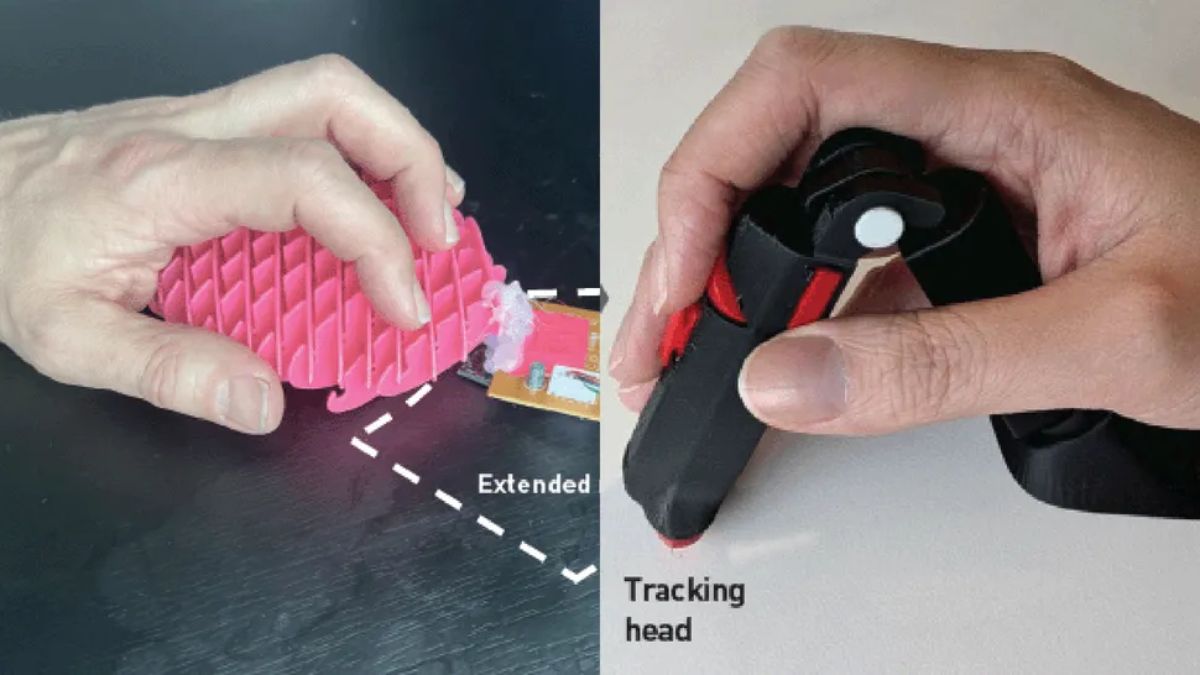Science
Innovative Mouse Designs Target Wrist Injuries with New Prototypes

Researchers are exploring groundbreaking designs for computer mice aimed at reducing wrist injuries and discomfort associated with prolonged use. With the traditional mouse design remaining largely unchanged for nearly six decades, new prototypes could usher in a significant transformation in how users interact with their devices.
One of the primary concerns with current mouse designs is their rigidity, which can lead to repetitive strain injuries. According to findings published in the journal ACM Interactions in the September-October 2025 issue, existing ergonomic solutions such as angled grips and trackballs have not effectively addressed the issue of wrist repositioning. Scientists at KTH Royal Institute of Technology argue that users are often forced to lift and shift their mice hundreds of times an hour, exacerbating discomfort.
Advancements in 3D printing and soft robotics are now paving the way for designs that are more adaptable to the natural movements of the human hand. The first prototype, named the Fleximouse, features a pliable mesh body that detects grip changes to control the cursor, rather than relying solely on surface movement. This innovative approach could significantly minimize the need for repetitive wrist movements.
The second prototype, known as the A-frame, was developed in collaboration with the Melbourne School of Design. This design allows the hand to rest in a vertical position, which helps align the forearm bones and reduces strain during extended use. Researchers believe that by refining these concepts, they can create personalized mouse options that further alleviate discomfort.
These prototypes aim to make long hours spent on computers less punishing for users. By addressing the fundamental issues associated with traditional mouse designs, the researchers hope to provide solutions that not only enhance comfort but also improve overall efficiency in computer use.
The ongoing research signifies a crucial step towards better ergonomics in technology, with the potential to benefit millions of users worldwide. As these designs progress, the scientific community remains optimistic about their impact on reducing wrist injuries and improving the user experience in a digital age.
-

 World5 months ago
World5 months agoSBI Announces QIP Floor Price at ₹811.05 Per Share
-

 Lifestyle5 months ago
Lifestyle5 months agoCept Unveils ₹3.1 Crore Urban Mobility Plan for Sustainable Growth
-

 Science4 months ago
Science4 months agoNew Blood Group Discovered in South Indian Woman at Rotary Centre
-

 World5 months ago
World5 months agoTorrential Rains Cause Flash Flooding in New York and New Jersey
-

 Top Stories5 months ago
Top Stories5 months agoKonkani Cultural Organisation to Host Pearl Jubilee in Abu Dhabi
-

 Sports4 months ago
Sports4 months agoBroad Advocates for Bowling Change Ahead of Final Test Against India
-

 Science5 months ago
Science5 months agoNothing Headphone 1 Review: A Bold Contender in Audio Design
-

 Top Stories5 months ago
Top Stories5 months agoAir India Crash Investigation Highlights Boeing Fuel Switch Concerns
-

 Business5 months ago
Business5 months agoIndian Stock Market Rebounds: Sensex and Nifty Rise After Four-Day Decline
-

 Sports4 months ago
Sports4 months agoCristian Totti Retires at 19: Pressure of Fame Takes Toll
-

 Politics5 months ago
Politics5 months agoAbandoned Doberman Finds New Home After Journey to Prague
-

 Top Stories5 months ago
Top Stories5 months agoPatna Bank Manager Abhishek Varun Found Dead in Well









